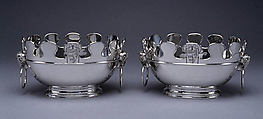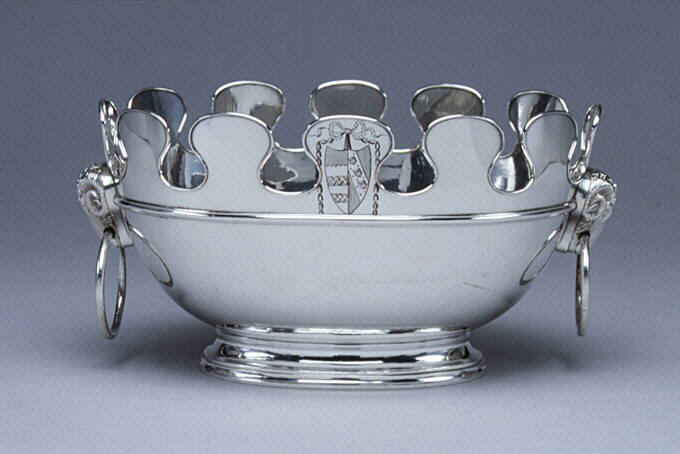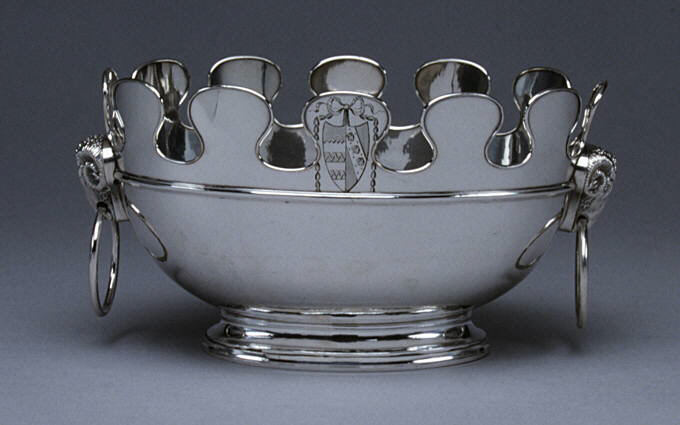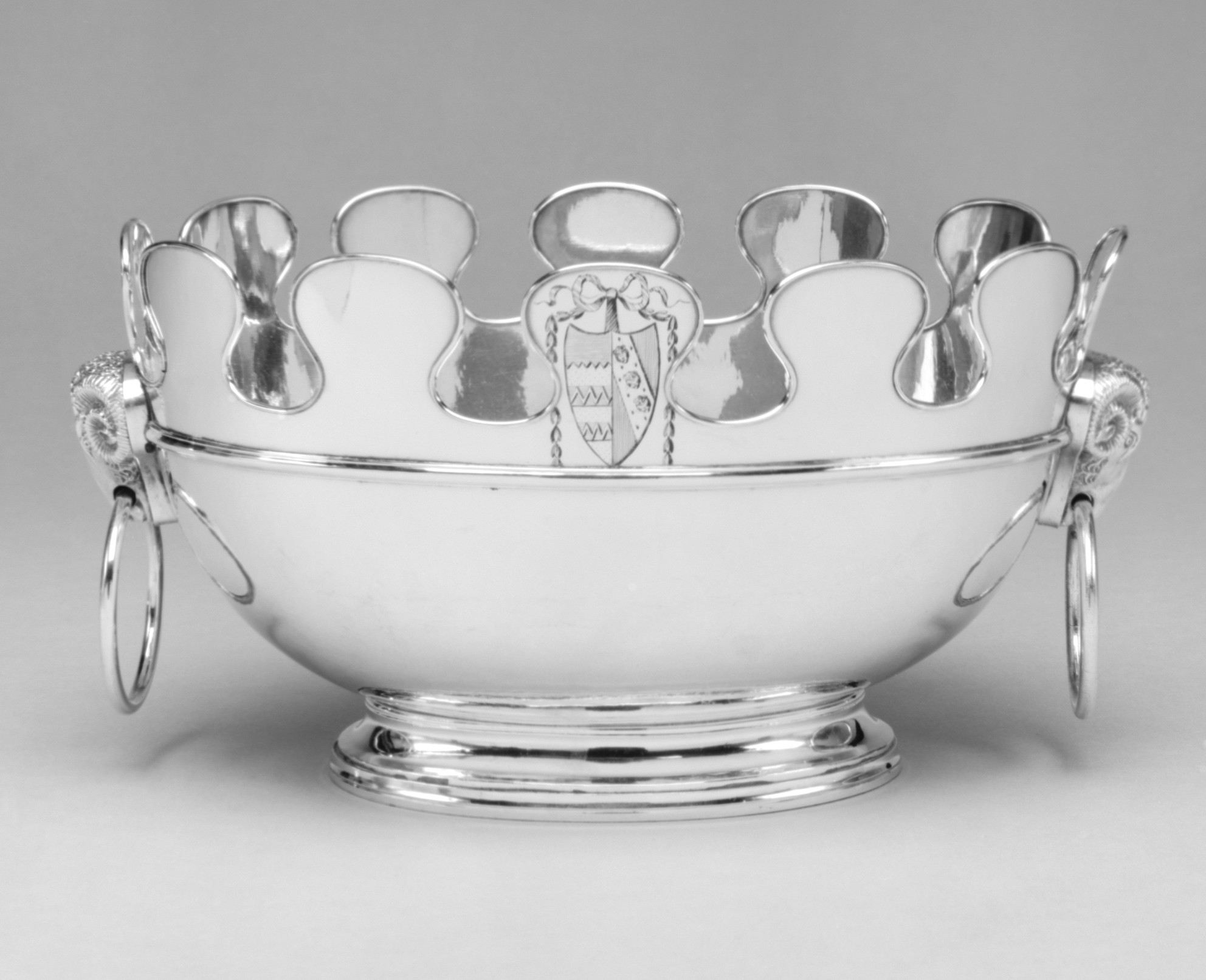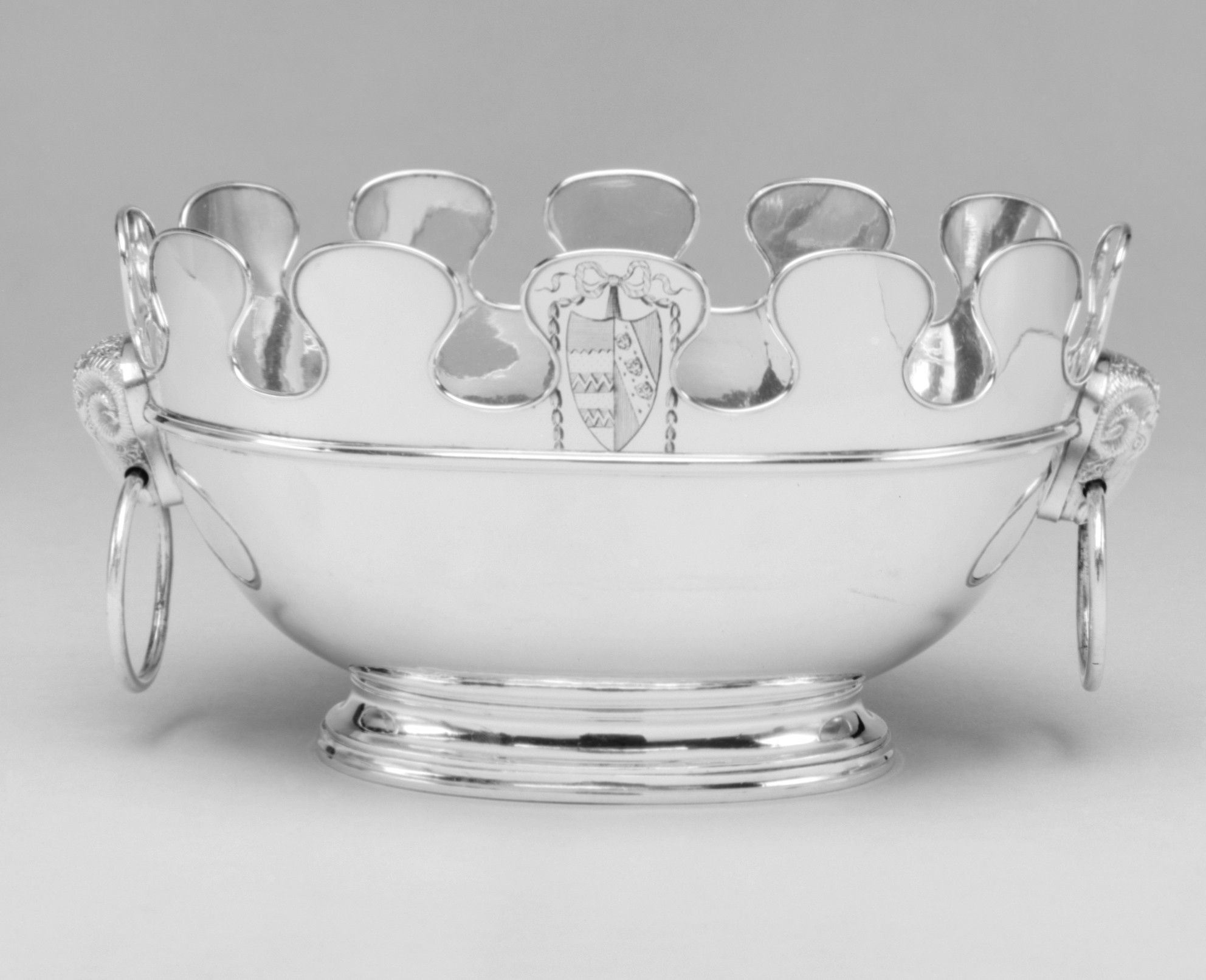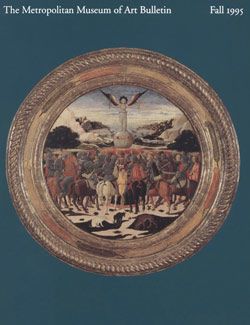Pair of verrières
Not on view
Verrières were used to cool wineglasses by immersing them in ice water. The foot of the inverted glass rested outside the notches of the verrière's rim. The low, oval, French form of verrière was usual in the second half of the eighteenth century. This form evolved from the monteith, the original deep, round bowl with notched rim that appeared in England in the 1680s.
Verrières were often made in porcelain and silver as part of dinner services and were more common on the Continent than in England. Our pair in Sheffield plate is particularly rare. The style is that of Neoclassical, Greek-taste silver works of the 1770s and 1780s, with rams' heads supporting the ring handles. Although the silver plating is substantial and the pieces are very well made, they were not marked by the manufacturer, a practice usually followed voluntarily by the makers of Sheffield plate in emulation of the marks legally imposed on gold- and silversmiths.
The arms engraved on the rim are those of John Sawbridge, Lord Mayor (1775–76) and four-time member of Parliament for the City of London, and his wife, Anne. Because a love knot rather than a crest is placed above the shield, these verrières were probably made for the Lady Mayoress.
Due to rights restrictions, this image cannot be enlarged, viewed at full screen, or downloaded.
This artwork is meant to be viewed from right to left. Scroll left to view more.
